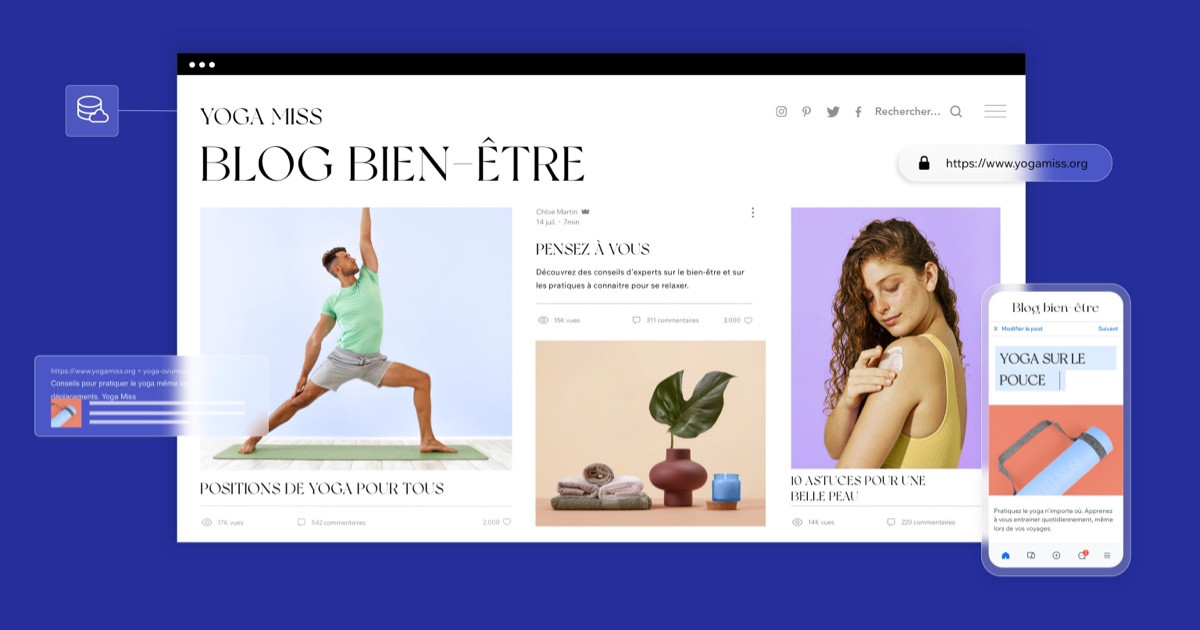Building a Strong Online Presence with Effective Web Design
Introduction
How to build a Strong Online Presence with Effective Web Design: In today’s digital age, a strong online presence is crucial for businesses and individuals alike. A well-designed website serves as the foundation of this presence, acting as a virtual storefront that can attract, engage, and convert visitors. Effective web design goes beyond aesthetics; it encompasses user experience, functionality, and search engine optimization (SEO). This article explores the key elements of web design that contribute to a strong online presence and offers practical tips for creating a successful website.
1. Establish a Clear Purpose and Brand Identity
Overview: A website should clearly communicate its purpose and reflect the brand’s identity. This involves understanding the target audience and crafting a design that resonates with them.
Key Elements:
- Purpose: Define the primary goal of your website, whether it’s to inform, sell products, generate leads, or entertain.
- Brand Identity: Consistently use colors, fonts, logos, and imagery that reflect your brand’s personality and values. This helps create a cohesive and recognizable brand image.
Tips:
- Create a Strong Value Proposition: Clearly articulate what makes your brand unique and why visitors should choose your products or services.
- Design for Your Audience: Consider the preferences and behaviors of your target audience when designing your website. For example, a corporate website may require a more formal design, while a creative portfolio may benefit from a more artistic approach.
2. Focus on User Experience (UX)
Overview: User experience (UX) is a critical aspect of web design that influences how visitors interact with your website. A positive UX ensures that visitors can easily navigate the site, find the information they need, and complete desired actions.
Key Elements:
- Navigation: A well-organized and intuitive navigation system helps users find content quickly and easily.
- Mobile Responsiveness: With the growing use of mobile devices, it’s essential to design a website that looks and functions well on all screen sizes.
- Loading Speed: Fast-loading pages reduce bounce rates and improve user satisfaction. Optimize images, reduce server response times, and use efficient coding practices.
Tips:
- Simplify Navigation: Use clear and concise labels for menu items and limit the number of options to avoid overwhelming users.
- Implement Mobile-First Design: Design your website with mobile users in mind first, then scale up for larger screens. This ensures a seamless experience across devices.
- Prioritize Content: Place important content and calls to action (CTAs) prominently, ensuring they’re easily accessible.
3. Create Engaging and High-Quality Content
Overview: Content is a key component of a website that informs, engages, and converts visitors. High-quality content can establish your brand as an authority in your industry and build trust with your audience.
Key Elements:
- Visual Content: Use high-quality images, videos, infographics, and other visual elements to complement your text and enhance the overall user experience.
- SEO Optimization: Optimize your content for search engines by using relevant keywords, meta descriptions, and alt tags for images.
- Content Variety: Offer a mix of content types, such as blog posts, case studies, testimonials, and product descriptions, to cater to different user preferences.
Tips:
- Produce Original Content: Create unique and valuable content that addresses the needs and interests of your audience. Avoid duplicating content from other sources.
- Use Compelling Headlines: Write attention-grabbing headlines that entice users to read further. Incorporate keywords naturally to improve SEO.
- Regularly Update Content: Keep your website fresh and relevant by regularly adding new content and updating existing information.
4. Optimize for Search Engines (SEO)
Overview: Search engine optimization (SEO) is the practice of optimizing a website to rank higher in search engine results pages (SERPs). A well-optimized website attracts organic traffic, increasing visibility and credibility.
Key Elements:
- Keyword Research: Identify and use relevant keywords that potential customers are searching for. This helps search engines understand the content and purpose of your site.
- On-Page SEO: Optimize on-page elements, including titles, headings, meta descriptions, URLs, and internal links.
- Technical SEO: Ensure your website is technically sound with a clean code structure, proper indexing, and a secure HTTPS protocol.
Tips:
- Use Descriptive URLs: Create clear and descriptive URLs that include relevant keywords. Avoid using generic or complex URLs.
- Optimize Images: Use descriptive file names and alt text for images, and compress image files to reduce loading times.
- Monitor and Analyze Performance: Use tools like Google Analytics and Google Search Console to track your website’s performance and identify areas for improvement.
5. Incorporate Strong Calls to Action (CTAs)
Overview: Calls to action (CTAs) are prompts that encourage visitors to take specific actions, such as signing up for a newsletter, making a purchase, or contacting your business. Effective CTAs are crucial for converting visitors into leads or customers.
Key Elements:
- Clarity: Use clear and concise language that communicates the desired action.
- Placement: Position CTAs prominently on the page, ensuring they’re easily accessible without being intrusive.
- Design: Use contrasting colors and visually appealing designs to make CTAs stand out.
Tips:
- Create a Sense of Urgency: Use phrases like “Limited Time Offer” or “Act Now” to encourage immediate action.
- Test and Optimize: Experiment with different CTA placements, colors, and wording to determine what works best for your audience.
- Offer Incentives: Provide incentives, such as discounts or free resources, to motivate users to take action.
6. Ensure Accessibility and Inclusivity
Overview: An accessible website ensures that all users, including those with disabilities, can access and interact with the content. Inclusive design practices broaden your audience and demonstrate a commitment to diversity.
Key Elements:
- Keyboard Navigation: Ensure all interactive elements can be accessed using a keyboard.
- Alternative Text: Provide descriptive alt text for images to assist users with visual impairments.
- Color Contrast: Use sufficient color contrast between text and background to enhance readability for users with visual impairments.
Tips:
- Use Semantic HTML: Use proper HTML tags for headings, lists, and other elements to ensure screen readers can interpret the content correctly.
- Provide Transcripts and Captions: Offer text transcripts for audio content and captions for videos to accommodate users with hearing impairments.
- Test for Accessibility: Use tools like the WAVE Web Accessibility Evaluation Tool to identify and address accessibility issues.
7. Monitor and Improve Website Performance
Overview: Maintaining and improving website performance is an ongoing process. Regular monitoring helps identify issues and optimize the user experience.
Key Elements:
- Performance Analytics: Use analytics tools to track key performance indicators (KPIs), such as page views, bounce rates, and conversion rates.
- User Feedback: Gather feedback from users to identify pain points and areas for improvement.
- Regular Updates: Keep your website’s content, design, and software up to date to ensure optimal performance.
Tips:
- Conduct Regular Audits: Perform regular audits of your website’s content, design, and technical aspects to identify and address any issues.
- Optimize for Speed: Continuously optimize your website’s speed by compressing images, leveraging browser caching, and minimizing JavaScript and CSS files.
- Adapt to Changing Trends: Stay informed about the latest web design trends and technologies, and be willing to adapt and innovate as needed.
Conclusion
Effective web design is a multifaceted discipline that encompasses aesthetics, functionality, user experience, and SEO. By establishing a clear purpose and brand identity, focusing on user experience, creating high-quality content, optimizing for search engines, incorporating strong CTAs, ensuring accessibility, and continuously monitoring performance, you can build a strong online presence that attracts and retains visitors. Remember that web design is an ongoing process, and staying up to date with the latest trends and best practices is key to maintaining a successful and engaging website.






